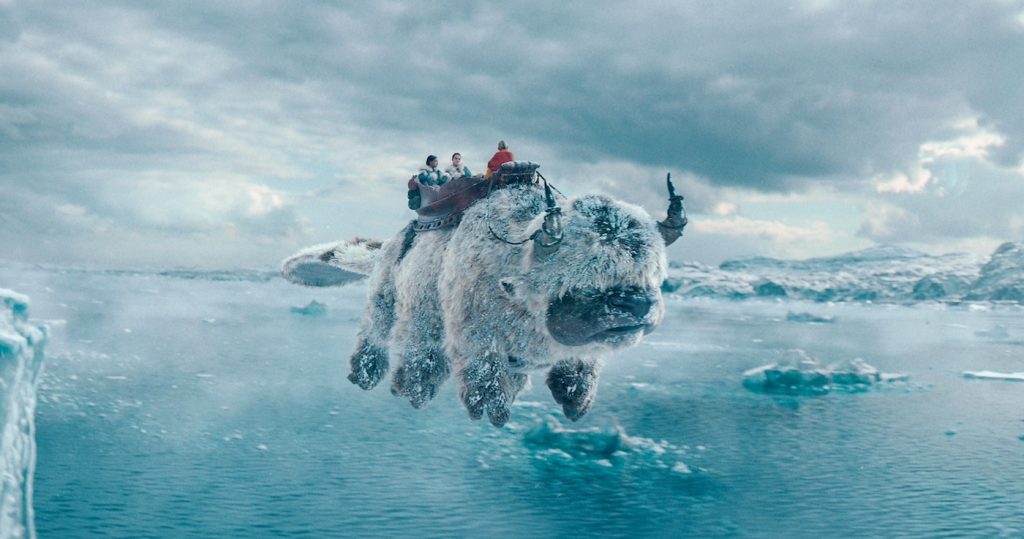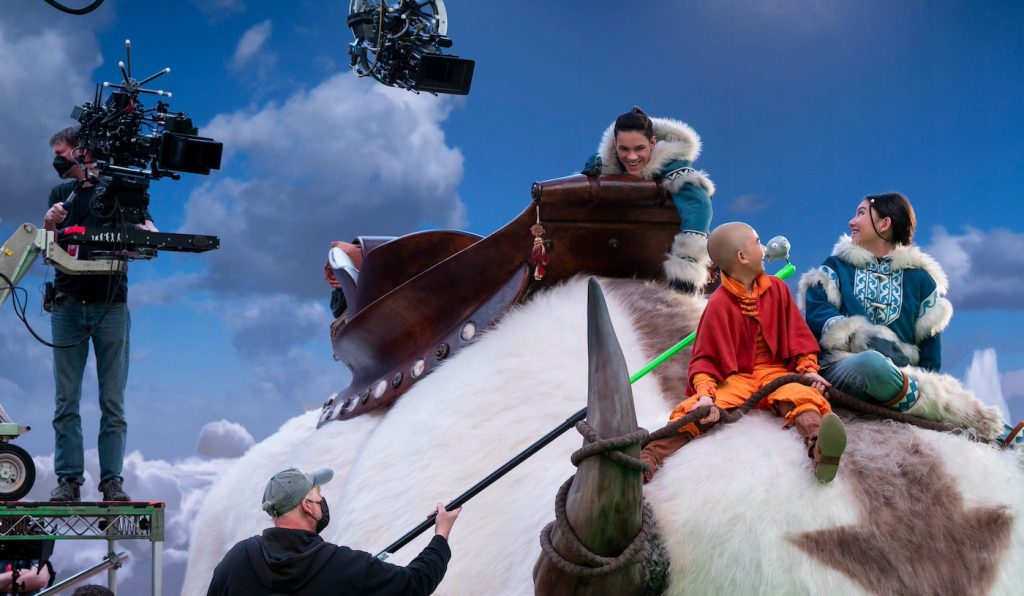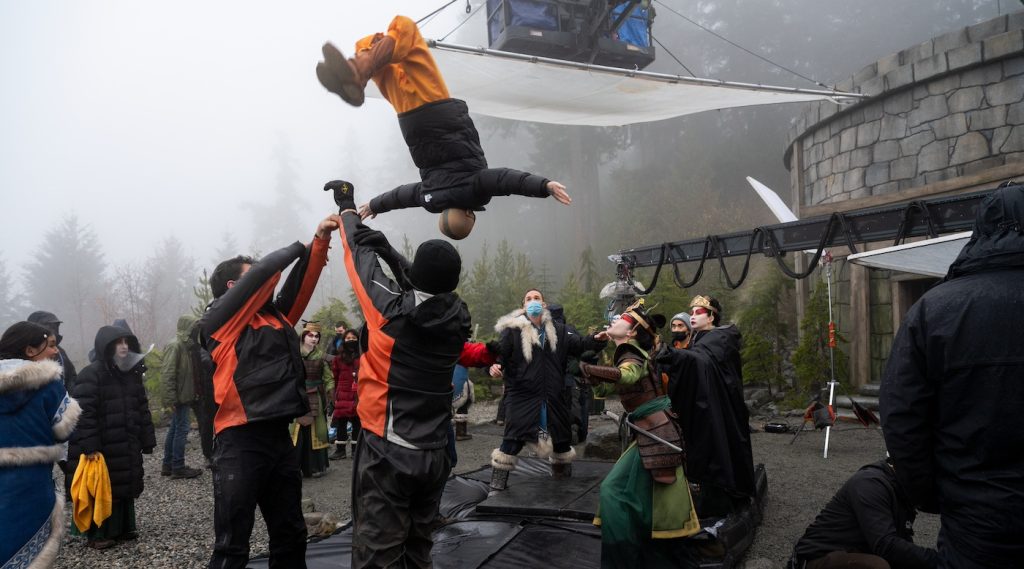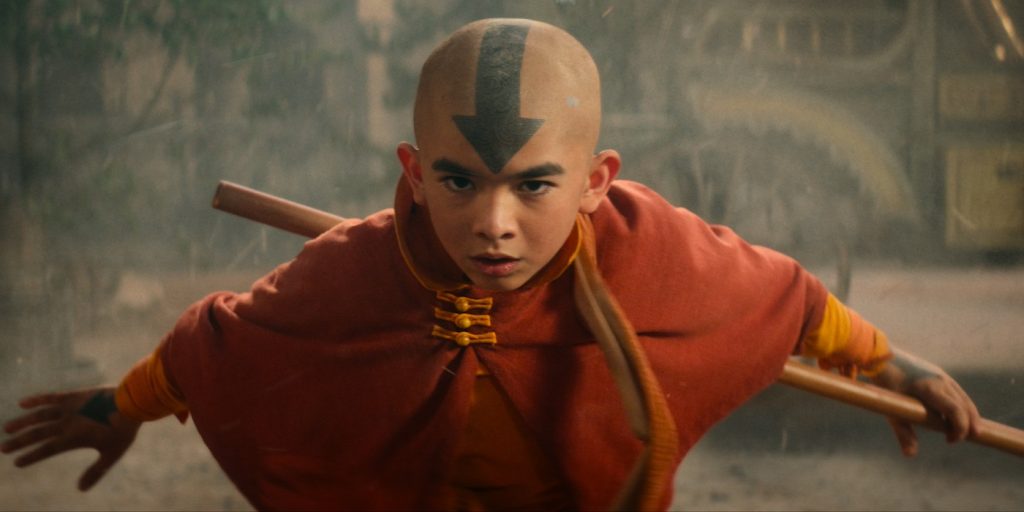Air, Water, Earth, Fire: DP Michael Balfry Brings “Avatar: The Last Airbender” to Life
Netflix took on producing the live-action remake of the long-running, beloved Nickelodeon animation Avatar: The Last Airbender, about four elemental kingdoms (fire, air, water, and earth) who live in harmony until the Fire Nation starts a war to take over the world. The series, which premiered late last month, is true to the original story. Twelve-year-old Aang (Gordon Cormier) is the sole remaining airbender after a Fire Nation attack, and he survives after being frozen in an iceberg for a century before waking up in an icy part of the world of the Southern Water Tribe.

The world around Aang has completely changed, and at the same time that he learns he’s the new avatar, a reincarnated master of all four bending disciplines, he also learns he’s the sole entity who can save this unfamiliar world. But he has help — Katara (Kiawentiio), the Southern Water Tribe’s last waterbender, and Sokka (Ian Ousley), her older brother. Prince Zuko (Dallas Liu), banished from the Fire Nation in favor of his sister until he can locate the avatar, quickly finds them, and the war, which has been raging for the past century, lands at Aang’s feet.
Aang’s exploits bring him to Earth Kingdom locations like Kyoshi Island and Omashu, a lush city carved into a mountain, Agna Qel’a, the icy jewel of the Water Tribe, and Roku’s Temple, a shrine atop a volcanic island. For cinematographer Michael Balfry, who shot the first half of the first episode as well as episodes three, four, seven, and eight, about 98% of his work was in the studio. He used lighting to give each of the four elemental worlds its own atmosphere, shot what he could practically in order to offer a fresh, live-action version of an animated story with an enduring fan base, and spoke with us about those aspects of the set as well as the inspiration he drew from the original cartoon.
How did you use the cinematography to visually differentiate the different elemental worlds?
I tried to keep it fairly simple because that’s always the hardest thing to do. Fire was a lot of darkness, the evil world. A lot of the lighting is motivated by flames, fire, moonlight, and by hard sunlight. When you get into Omashu, the earth world, we had fairly strong light but softer, directional. I tried to keep the palette in the earth tones. That made it feel warm but not hot, like the Fire Nation. And then, obviously, when we go up north, that’s the coolness of the world. Having shot in all those locations in real life in the past, I was able to bring that experience to The Last Airbender when we had to go into the studio and recreate it. When we’re up north it’s the coldness, the ice, there’s always a breeze up there, and sometimes a really hard light. But you don’t want a hard light that makes your actors squint as if they’re in pain. We tried to keep it directional and soft. Those were the broad strokes of how we approached it.

Have you watched the animated version? Was there anything you tried to carry over?
I did watch the animated show. Wonderful storytelling. It just moved me. I’m getting goosebumps right now just thinking about it. Moving forward to the live-action, we used the animation as inspiration. The animation had a lot of classic filmmaking in it, from what I remember — it’s been a few years since I’ve seen it. But you know, the bad guys are a lot lower, closer, and wider, the lens is not as flattering, more intimidating. I tried to keep Aang, Katara, and Sokka in three shots and then isolated them into brother and sister teams to try to create that connectivity of the characters. That was important. Michael Wylie, our production designer, is an extremely talented man, and he brought sets and assets that really helped me sell the story. If the set looks great, it makes your job so much easier. And Albert Kim, the showrunner, let the creatives be creative, but gave us a roadmap. A very large roadmap because there’s just so much in that animation.

That sense of scale made it into the live-action, too.
When we were color-grading it, I said, I’ve just been around the world, and I haven’t left the stage. What a treat to be part of that.
In a visual effects-heavy series like this, how is your process affected?
It does affect it, but we go in knowing what needs to be done. We fix things in prep and try not to fix things in post. For several episodes, I worked with Jabbar Raisani, the director. He’s extremely knowledgeable on special effects. He worked on Stranger Things, post-side, and he came in knowing what could and couldn’t work. I’d bring my two cents in, and together, we’d forge a path. We had a strong visual effects team there, and it was very collaborative.
Do you have any examples?
We did a scene toward the end of the show where the world turns red and then goes to black and white or monochrome. The red part, I did that practically on set, and it worked out very well. We were talking with visual effects, and they said you can do it practically and leave it as is or use effects down the road. And I said I’d like to do it practically when the moon turns red. My thinking was that we had lanterns there, and I wanted to keep the color of the lanterns true. So the whole lighting changes, except the lanterns remain a constant, and that psychologically helps me sell the idea that it’s a blood moon. And for the black and white, I kept it fairly straightforward. In post-production, we just sat there and tweaked it to make it work for what the story was trying to tell at that point in time. It was a team sport.

Was there any elemental kingdom that was harder to get right?
The stunt department helped a lot with the moves and creating the hand-bending. That was a learning process. We’d sit there and look at dailies to see what did and didn’t work. They’d rehearse behind the scenes with the actors, trying to nail the fluidity of the water, the abruptness of the fire, the strength of the land, and how they’d move their hands. That was a bit of a process, which, by the second week of shooting, was pretty dialed in.
This a series appealing to a built-in fan group. How has the response been?
It’s a massive story. I think the whole team is enjoying the fact that the fan base, the majority is really enjoying the show. We’re all hoping we can continue telling the story of their journey. It was a fantastic shoot to be on because we were recreating and retelling at the same time. We were trying to improve on what had been done in the past. It is a darker story than what the animation was, but the audience who enjoyed the animation many years ago has now grown up, and I hope they’re enjoying this new approach.
Avatar: The Last Airbender is streaming on Netflix.
For more on big titles on Netflix, check these out:
How “Spaceman” Production Designer Jan Houllevigue Built Adam Sandler’s Sci-Fi Love Story
Final Warning: “3 Body Problem” Trailer Drops, Unveiling New Saga From “Game of Thrones” Creators
Double Oscar Nominee Richard King Unveils the Aural Secrets of “Oppenheimer” and “Maestro”
Featured image: Avatar: The Last Airbender. (L to R) Gordon Cormier as Aang, Ian Ousley as Sokka, Kiawentiio as Katara in season 1 of Avatar: The Last Airbender. Cr. Robert Falconer/Netflix © 2024



